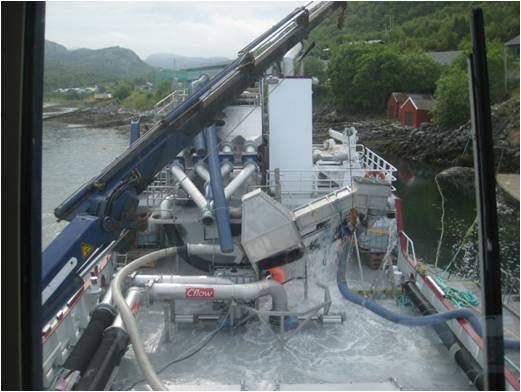The industry’s vision is ±1% accuracy on salmon average weight, and ±0.1% on the number of fish in the different size classes ready for slaughter (2-3, 3-4kg etc). The project aims to develop knowledge and demonstrate solutions which can help to make the quantum leap in biomass control from the current status of 5- 10% typical error towards the industry’s vision.
It is clear that the industry's desired accuracy will not be reached solely within this project.
The aim of the project is rather to explore the scientific baseline necessary to obtain a leap in control towards the vision. This will be done through a thorough examination and exploration of new solutions in instrumentation, computer modelling, fish behaviour and operation of technology.
The consortium is convinced that a wide, multidisciplinary, scientific approach is needed to provide the basis necessary for a significant progress in biomass control for large cages
Sub-goals leading to accomplishment of the main objectives:
1. Develop and evaluate basic technologies for biomass measurement and monitoring. Assess and demonstrate the feasibility and capability of new equipment systems for biomass measurement based on the evaluated technologies.
2. Develop a theoretical basis for continuous model-based estimation on the total number and weight distribution of salmon in a cage with emphasis on establishing and validating a mathematical model representation of biomass growth.
3. Explore the dynamics of salmon behaviour and welfare in cages to provide a theoretical
foundation for more representative sampling for existing and new biomass technology.
4. Develop new knowledge on the implementation and operation of measurement instruments to maximize accuracy and repeatability in commercial aquaculture production.
Problem definition
The issue of biomass control has been prevailing over the past 20 years as units in commercial salmon farming have become larger and larger. Modern cages may be 50 m in diameter, 40 m deep with highly variable effective volumes (related to current deformation)and containing up to 1200 tons of fish (Lader et al. 2008). The modern farms thus consist of a vast, ever changing volume and a huge number of individual fish, constantly swimming. This constitutes an enormous challenge with respect to biomass monitoring. Accurate estimation of available biomass and fish count, as well as sizes and weights in each cage is crucial through the whole production cycle. Many factors depend on it, such as dosage of feed and medicaments, better fish welfare with respect to population density and oxygen flow, an accurate basis for advance sales, estimation of site ecology and thus the general profitability of fish farms.
The reasons for the imprecise estimates of the state-of-the-art systems are not fully understood and will be subject to investigation. The dynamics of fish density in cages are unknown, e.g. whether different size fractions utilize different space domains in the cages. When it comes to technology, there is a need for a thorough basis of knowledge for both operational methods and software. The core technology for biomass estimation has not seen any significant changes during the last 10-15 years, and a screening of possible new approaches regarding measurement principles should be done to meet the challenge. Significant differences in accuracy occur with the use of similar equipment at different sites. This apparently random fluctuation necessitates a proper examination regarding protocols for efficient operation of equipment and a well thought through man-machine-interaction (MMI).
A thoroughly communicated, fully transparent process lead to an open workshop on 23rd of June 2009 where industry and governmental parties were invited to influence the project focus (funded by The Norwegian Fishery and Aquaculture Industry Research Fund (FHF) (Project 900271)). The problem of measuring the total biomass in a cage consists of two elements:
1. Keeping accurate account of the number of salmon in the cage. It is considered very difficult to achieve the vision accuracy of ±0.1% in the fish count based on measurements while the fish are in the cage. The approach will thus be to do an accurate counting of the number of fish put into the cage during start-up and splitting of cages, and then keep accurate account of the number of fish taken out of the cage due to e.g. death, sickness, “leakage escapes” and sampling. Proper instrumentation, operational procedures and a functional intelligent accounting system will be needed for this purpose.
2. Measuring the weight distribution of the salmon in the cage. This needs to be done in situ with minimal disturbance to the fish. All technologies that have been developed and that seem feasible for this purpose are based upon measurements within local, limited volumes within the cage. Since the fish tend to segregate into different size categories and to gather into schools, reliable procedures are needed to obtain a representative sampling of the total fish population and/or to compensate for statistically biased samples. New knowledge on fish behaviour is needed in addition to more suitable and accurate instruments. This combined knowledge will have to be brought forward by means of new operational management guidelines.
The four main research activities in KMB EXACTUS addresses the needs listed above. These have been identified in close cooperation with the industry, both farmers and producers, as the most important scientific challenges for the biomass monitoring today.

